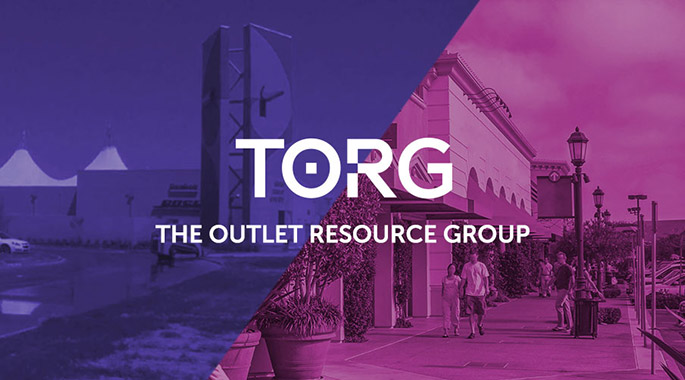
THELATEST
Taking The Global Approach
May 9, 2016
Appeared in the May 2016 issue of Value Retail News.
North America is home to 206 outlet centers, or about half of the 420 outlet centers in the entire world and slightly more than 160 outlet centers in Europe. While the international outlet industry has often looked to the U.S. for inspiration, ideas haven’t always flowed in both directions. Now U.S. consultancy The Outlet Resource Group is rolling out a strategy to blend the best of European and American outlet ingenuity. VRN’s contributing editor Patience Kramer spoke with Lisa Wagner, president of TORG, about this new approach.
You have a lot of experience working with the outlet sector in Europe. Tell us when and how you became part of the sector there.
I began working in the UK and Europe in 1994. At the time, I was VP of marketing at McArthurGlen in the U.S., and in the midst of our going through our IPO in the U.S, major brands began inquiring about the potential of outlet development in Europe. We began exploratory efforts and ultimately I was the only full-time executive of the U.S. company to join McArthurGlen Europe. We opened the first purpose-built outlet center at Cheshire Oaks in the UK, and an American style center in Troyes, France.
I then was a founding partner of Outlet Centres International, a London-based company with Lehman Brothers as our financial partner. We opened multiple centers, including the large and successful break-out center in Zweibrucken, Germany on a former NATO air base. That one took years to obtain planning consent on, due to the German Retail Federation’s strong lobbying against outlet centers.
What have you learned from working in Europe?
I have kept a hand in Europe for decades now, consulting on new development and on improvement of underperforming assets. It is very fulfilling, rather like being a missionary for the outlet industry, brining the best practices of the category and applying them to the local situation.
You’ve always had a global approach to business in terms of focusing on the big picture and reaching for new solutions. How do you plan to take that strategy forward?
We named our company TORG – The Outlet Resource Group – because we wanted from day one to work around the world as a kind of SWAT team for outlets, both centers and tenants. The TORG name is intentionally international in its pronunciation and spelling.
We feel that the world is truly getting smaller and that the best way to keep outlet centers interesting and relevant is to introduce new brands from other parts of the world. The most interesting thing I’ve learned is that from country to counry, consumers are much more similar than they are different in their motivations, behavior patterns and preferences. The differences are nuances – which are important and need to be embraced. Understanding cultural nuances is critical for being effective in business in other countries.
You represent the German brand Liebeskind Berlin in the U.S. Is cross-pollinating with tenants on both sides of the pond part of your strategy?
The Internet has introduced consumers to new brands, and millennials, who are hugely influential in the U.S., love the exciting brands coming from Europe in the fast fashion, youthful category. They like Uniqlo and Superdry.
For many of these brands, coming to the U.S. is a natural. Although the dollar is strong, it’s very appealing to come here and receive attractive tenant allowances and favorable operating conditions, especially considering the cost of doing business in Europe in rental structure, in labor costs, in labor restrictions.
A lot of brands from the U.S. are not represented in Europe or throughout the world. But there is opportunity. A brand that’s past its prime in the U.S. can have a second life in markets where audiences embrace American brands.
We count more than 2,500 outlet chains in Europe compared to less than 400 inn the U.S. Why are the numbers so different?
You aren’t going to find brands in Europe that have 150 stores because the majorities are not producing goods for outlets.
Also, many different brands are specific to a region or country. If you’re a brand that’s hot in Spain or Portugal, how far out of your region can you expand and be relevant? For example, Liebeskind Berlin is a classic leather, shoe and handbag brand from Germany, very Northern European. It is especially know for high-quality handbags, but you won’t see much Liebeskind in Spain or Italy, where consumers prefer a very different look. On the other hand, there is Zara, a retailer with worldwide appeal.
In the U.S., there is a lot of sameness – about 50 percent of the centers have the same brands. The tenants become redundant very quickly. I think this is because we are one country and we don’t have that much regional difference. This one of the things that makes Europe interesting, that it’s so varied; each country has its own retail world.
Why is there so little made-for-outlet product in Europe?
Made-for-outlet just isn’t accepted in Europe. There are exceptions but many feel it would be a loss of integrity for their brand. Another reason, and it varies by country, is that there are prohibitions against made-for-outlet. There’s much more regulation in the EU than in the U.S. In Europe, you cannot say a product is an “outlet product” or a “factory product” unless it has been on sale previously. Although there is some intentional reproduction, European brands don’t embrace a separate line made for outlets.
How does marketing in Europe compare to the U.S.?
Marketing is more sophisticated in Europe. They embraced digital marketing and app-based loyalty programs way before we saw them here.
There is also much more cooperation marketing between brands and landlords. In Europe many leases are based on the landlord getting a percentage of sales, so it’s in the financial interest of the landlord to put their best foot forward in marketing to achieve the highest possible level of sales. In the U.S., owners often chop their way to return on investment by cutting marketing budgets. As a marketer, I find Europe a much more sensible environment.
How does shopping the experience in Europe compare to the U.S.?
From the beginning of the outlet industry in Europe in the mid-90’s, outlet centers have been developed in urban centers as part of leisure parks, so there are other attractions, such as entertainment and dining. Shopping isn’t always seen as the main attraction. What’s interesting is that in the U.S., millennials are pushing for a more experiential environment. Europe has always had it.

sign upfor more
We would love to stay in touch with you! Click below to sign up for emails and notifications regarding our exciting growth.
